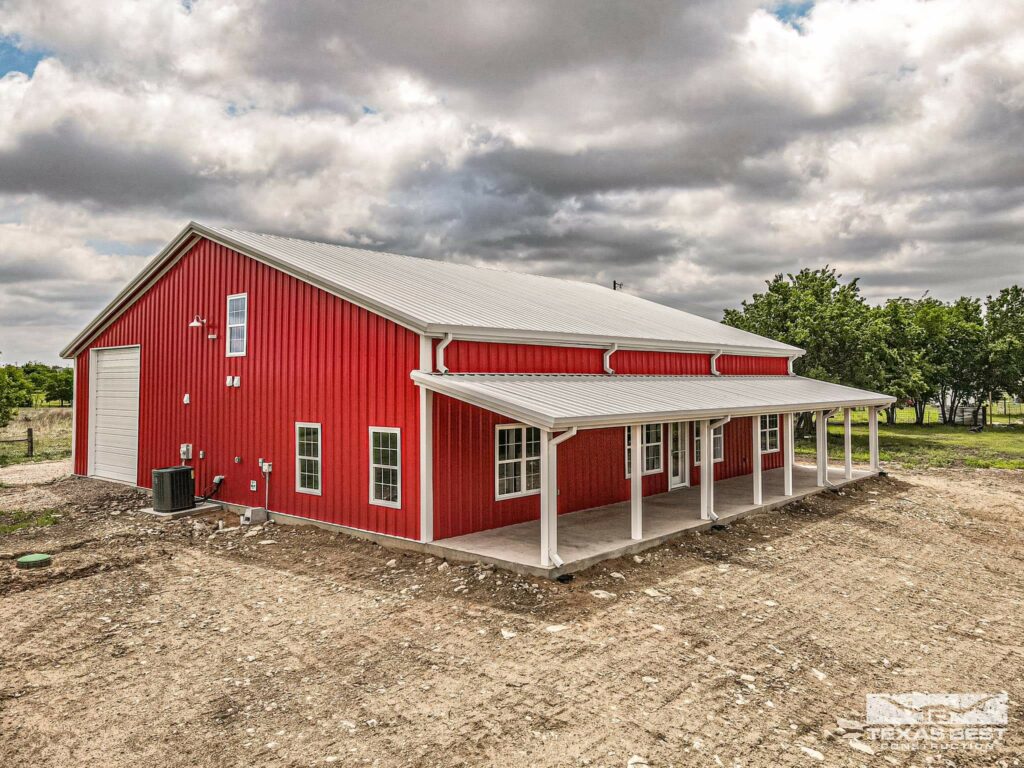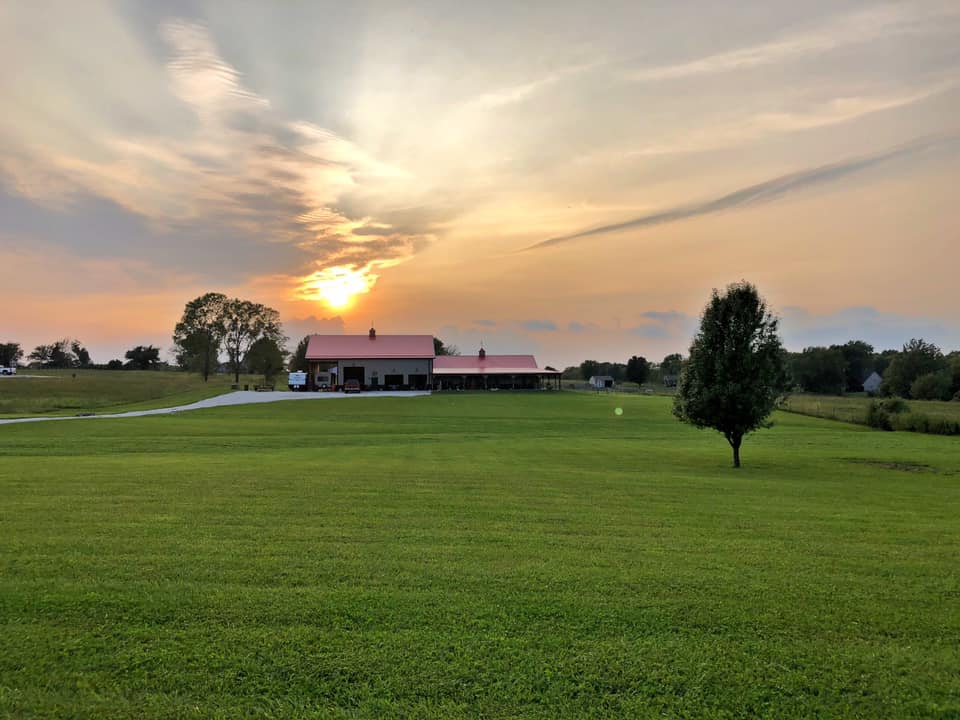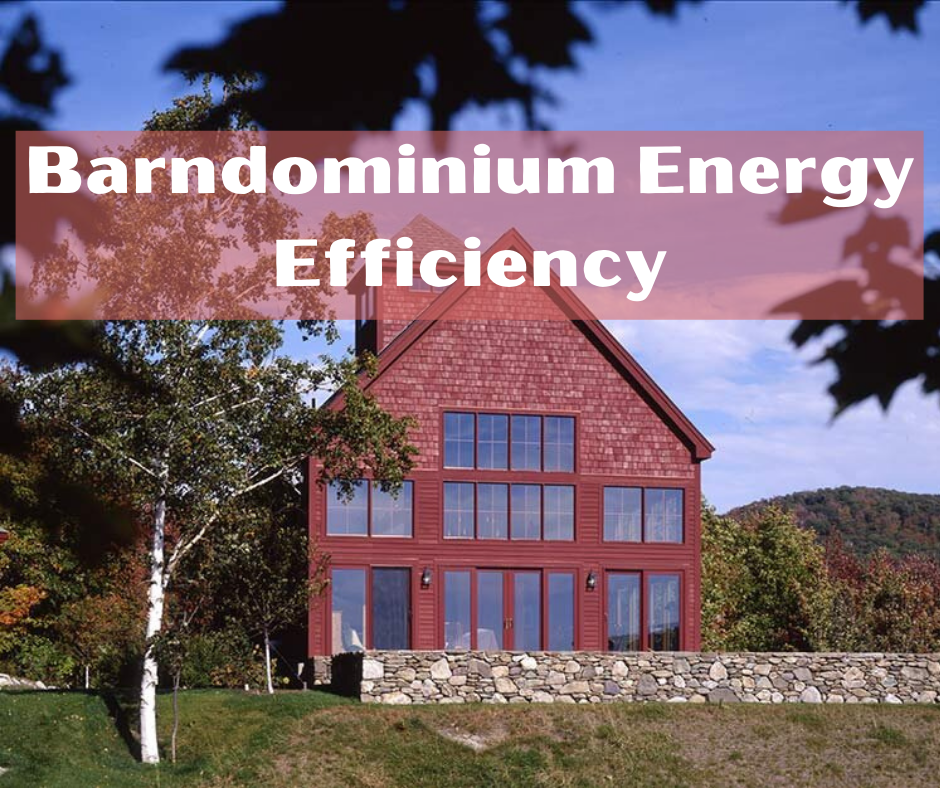
Before building a barndominium, you likely want to ensure that it can keep you comfortable. If you struggle to keep your home at the right temperature, building a barndominium may not be worth it.
So, are barndominiums energy efficient? A metal building is not typically the easiest type of structure to cool or heat, as metal is not a good insulator. However, with the right design features, a barndominium may offer better energy savings than a traditional home.
Here is a closer look at what it takes to increase the barndominium energy efficiency.
Metal Buildings Are Not Naturally Energy Efficient
The basic design of a barndominium puts it at a disadvantage when it comes to energy efficiency. Most barndominiums are built with metal frames, siding, and roofs. Traditional homes are built with wood stud frames. The outer walls are typically covered with vinyl or aluminum siding. Asphalt is the most common roofing option.
Metal is a poor insulator compared to wood, which means that it fails to retain heat or cold. However, metal is an excellent conductor. A metal building without insulation is at the mercy of the outdoor temperatures. During cold weather, the inside of the building becomes cold. When the sun shines on the building during the summer, the inside grows extremely hot.
What Impacts Barndominium Energy Efficiency?
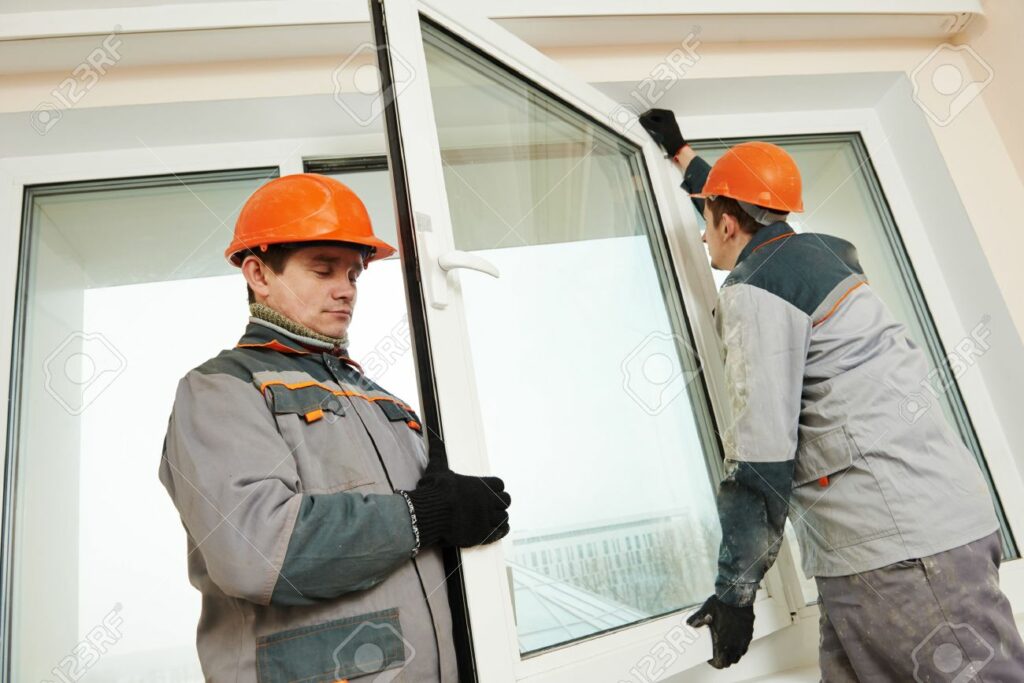


While metal is not a great insulator, it is just one of the details that influence the energy efficiency of a barndominium.
Your ability to maintain a comfortable temperature depends on a variety of factors, including:
- Size of the home
- Heating and cooling systems
- Air circulation
- Insulation
- Windows and doors
- Region
- Special features
You can make a barndominium more energy efficient by taking the time to select the right design features. Adding more insulation, choosing a one-floor design, and other steps help cut your heating and cooling costs.
How to Increase Barndominium Energy Efficiency
Proper construction is the first step for ensuring that your barndominium does not waste energy. Poor craftsmanship may result in gaps in the siding or roofing that allow air to escape.
Here are a few additional steps to help reduce heating and cooling costs:
- Install insulation with a high R-value
- Install the most energy-efficient appliances
- Look for one-floor barndominium designs
- Choose an open-concept floor plan with exposed ceilings
- Use energy-efficient windows and doors
- Consider installing underfloor heating
If you have already built a barndominium, it is not too late to make it more energy-efficient. Some of these recommendations can be completed on existing structures. For example, you can install better insulation, windows, and HVAC systems.
Install Insulation with a High R-Value
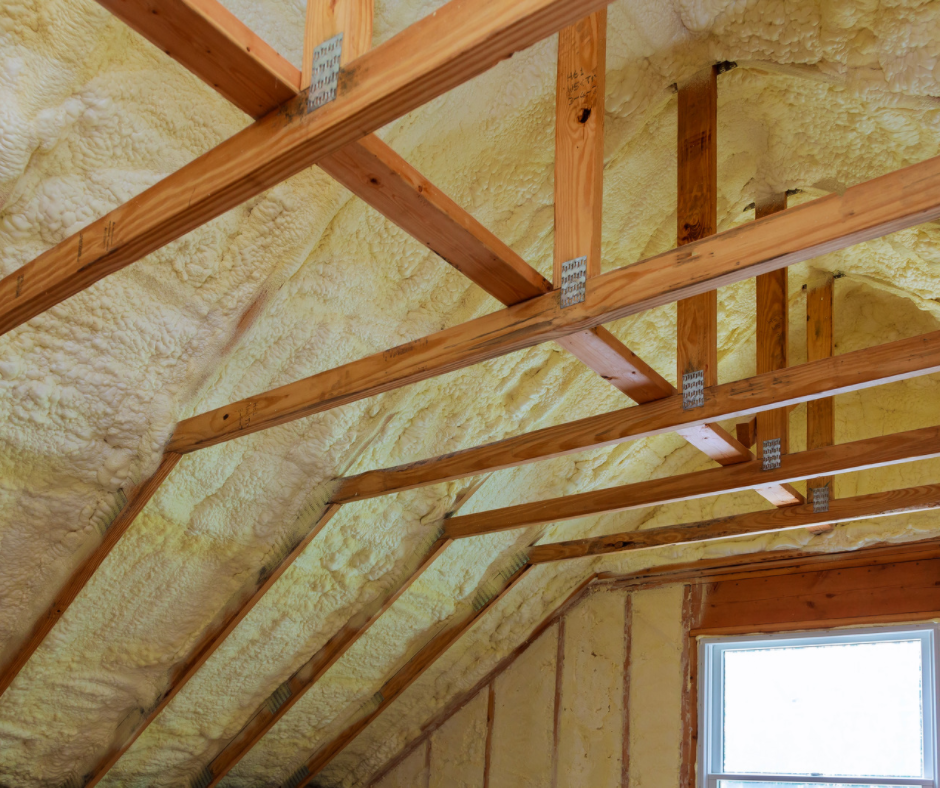
Barndominiums often have deeper wall cavities compared to traditional homes. The post-frame used to construct a barndominium is deeper than a wood stud frame. The interior is then framed to support the drywall, which adds to the total depth.
The wall cavity of a typical home is about 10 inches deep. The insides of the walls of a barndominium may measure 12 to 16 inches deep.
Adding more insulation increases the energy efficiency of the home by preventing air from escaping. You seal your home to lock in the indoor temperature and keep the outdoor weather at bay. Most homes include blanket insulation in the walls and ceiling, which offers the least insulating value. Superior options include fiberglass board, blown-in insulation, and spray foam.
Fiberglass boards and rigid boards are used in areas where you can easily add blown-in insulation or spray foam. For example, you may attach fiberglass boards to the underside of the roof to reduce heat loss.
Spray foam provides the best coverage for the walls, as it expands to fill every crevasse inside the wall cavity. Blown-in insulation also has a high insulating value but is best suited for attics and crawlspaces, as it tends to settle.
Install the Most Energy-Efficient Appliances
The efficiency of your heating and cooling depends on the appliances that you buy. Installing a multi-stage furnace and a multi-speed air conditioner system will provide the greatest energy savings.
A multi-stage furnace, or variable stage furnace, often includes 70 operating stages. Older single-stage furnaces only have a single setting. The furnace turns on and runs at full capacity until your home reaches the temperature set on your thermostat.
With a variable stage system, the furnace starts at about 30% heating power and increases its power in 1% increments. The additional stages waste less energy by only using as much power as needed to heat your barndominium.
Multi-speed air conditioners offer the same advantage. Instead of running at full power throughout the summer, a multi-speed AC system can run at lower speeds to conserve energy.
Along with a multi-stage furnace, you could consider installing underfloor heating. The heat from under the floor can warm a single-floor barndominium much faster compared to heat from a set of vents.
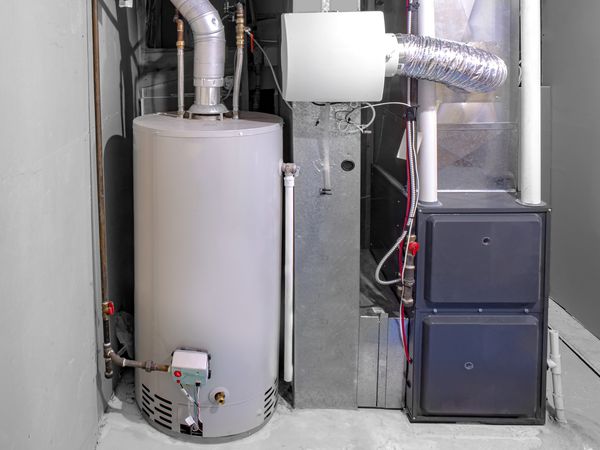
Look for One-Floor Barndominium Designs
A large home is more difficult to heat and cool. However, the number of floors is also important. A 2000-square-foot one-floor home may be easier to cool compared to a 2000-square-foot two-floor home. Cooling a single floor is more efficient, as heat rises.
Barndominiums rarely have multiple floors. The ranch-style layout is common and features a narrow, long design. The front of the house often includes the living area and kitchen while the rear of the house includes the bedrooms and bathrooms. You can design your barndominium plan on your own or find designs for sale online.
Choose an Open-Concept Floor Plan with Exposed Ceilings
Along with choosing a one-floor design, you should look for floor plans that minimize the use of walls. An open-concept floor plan includes wide-open spaces instead of confining the living room and adjacent rooms behind four walls.
The open design helps promote better air circulation, especially when paired with exposed ceilings. Taking advantage of the taller frame of a barndominium can provide taller ceilings. Taller ceilings and an open floor plan allow your furnace and AC system to work less to cool the same size space.
Use Energy-Efficient Windows and Doors
The frame of a barndominium can support larger windows. If the windows are too thin or lack proper sealing, air escapes, and your utility bills rise.
Spending a little bit of extra money on windows and doors can help keep your barndominium sealed. The latest energy-efficient windows and doors are also likely to last longer. You may be able to hold off longer before needing to replace your windows or doors, resulting in more cost savings.
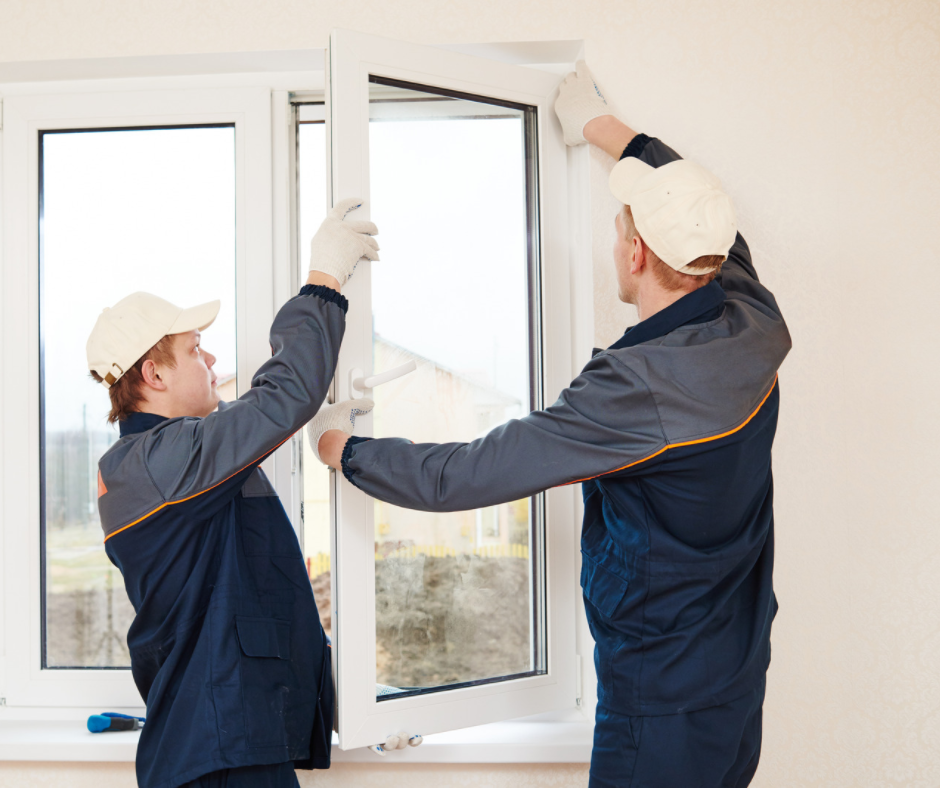
Conclusion
Barndominiums can provide an energy-efficient place to live for decades to come. However, you need to ensure that your barndominium is equipped with the right features.
A metal building is not good at retaining heat or cool air. The indoor temperature depends on the outdoor temperature. To fix this problem, a barndominium typically has insulation and drywall. Yet, you need more insulation compared to a standard home.
Make sure that your barndominium has optimal insulation in the wall cavities using a product with a high insulating value. You should also ensure that all windows, doors, and appliances meet energy efficiency standards.
If you take the time to install the right features, you can maximize the barndominium energy efficiency and drastically reduce your heating and cooling bills.
Building a barndominium already costs less than a traditional home, imagine how much more savings you can have with its cost-efficiency. In addition, you also need to make sure you include barndominium financing and insurance in planning your build.
